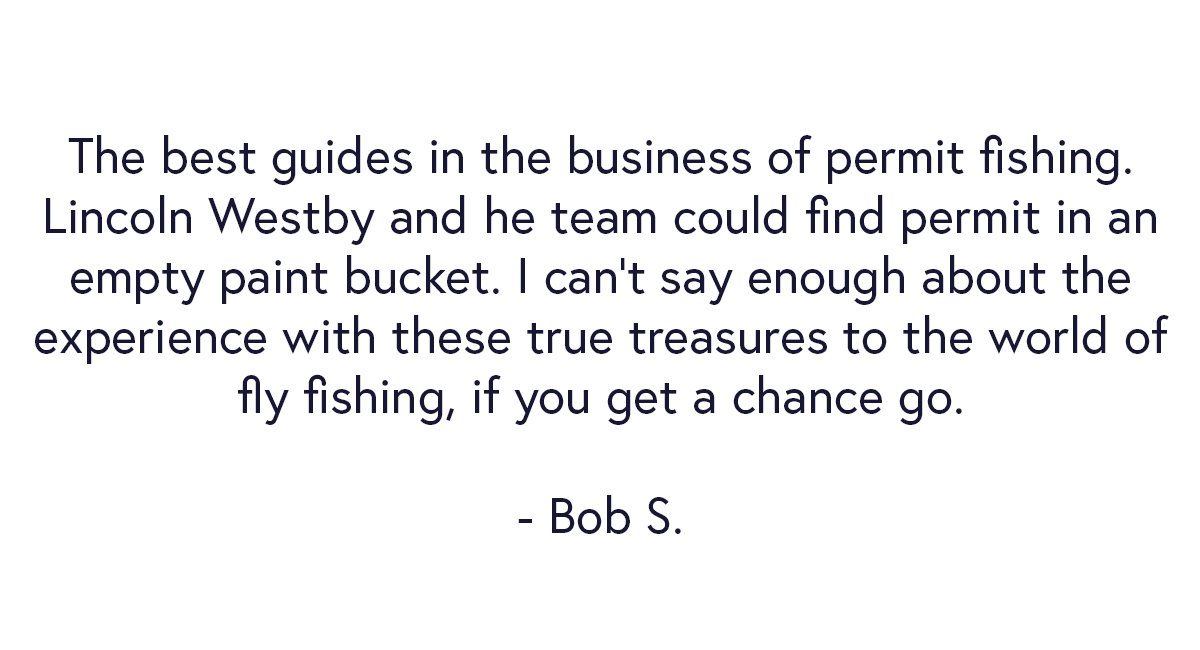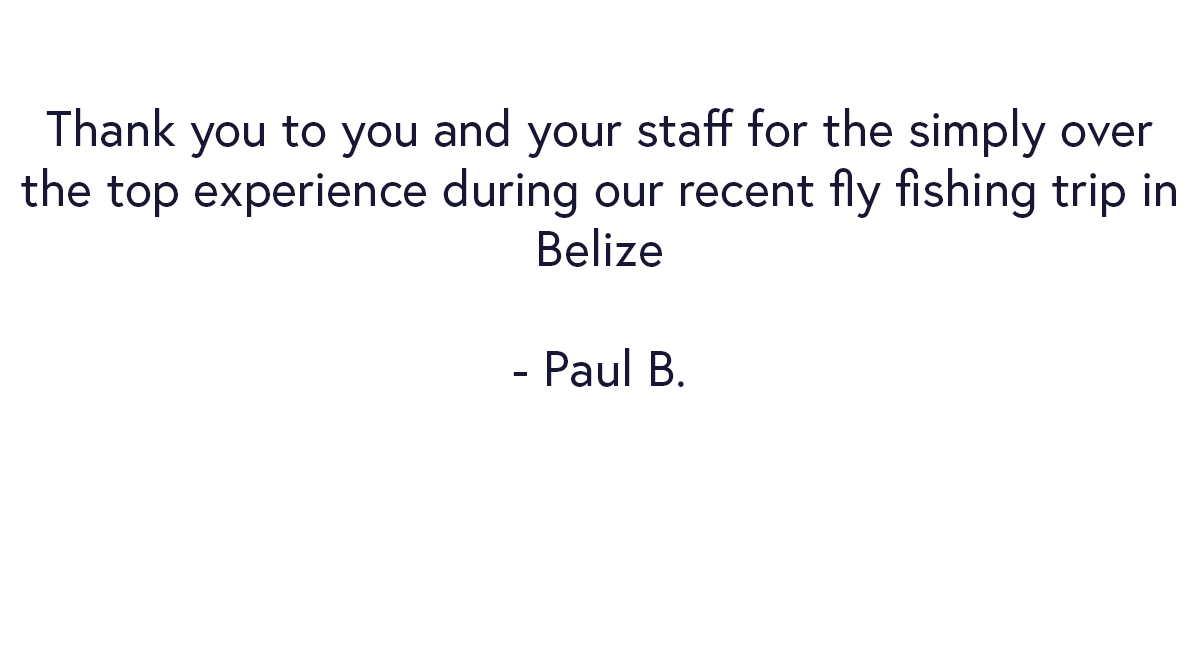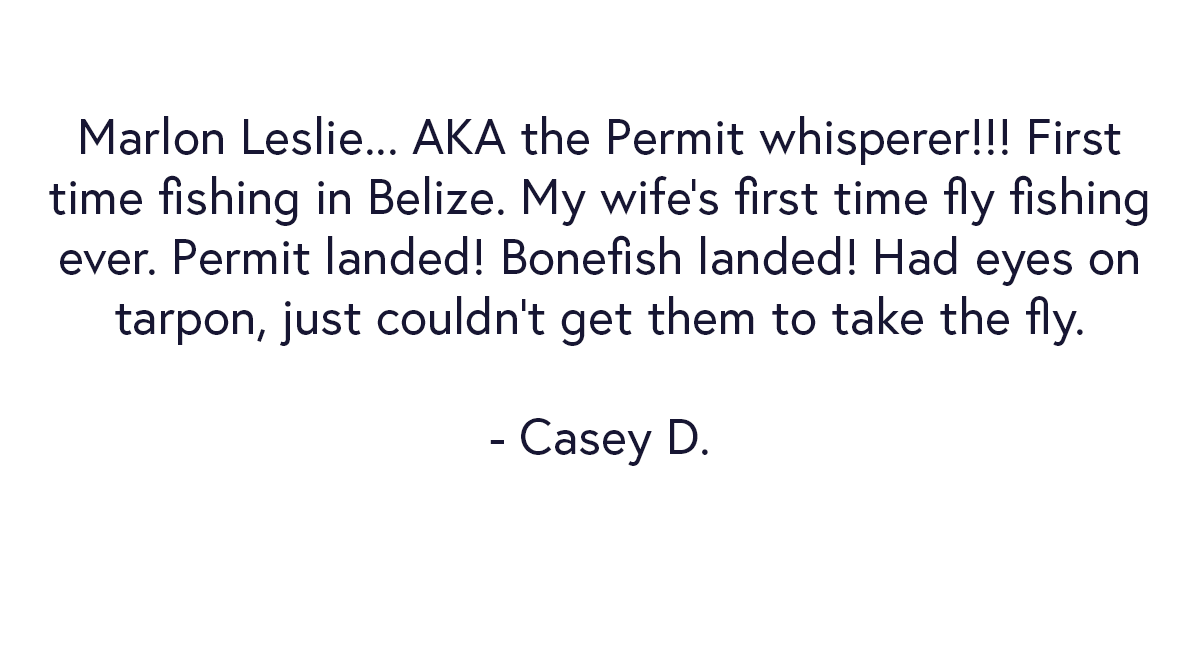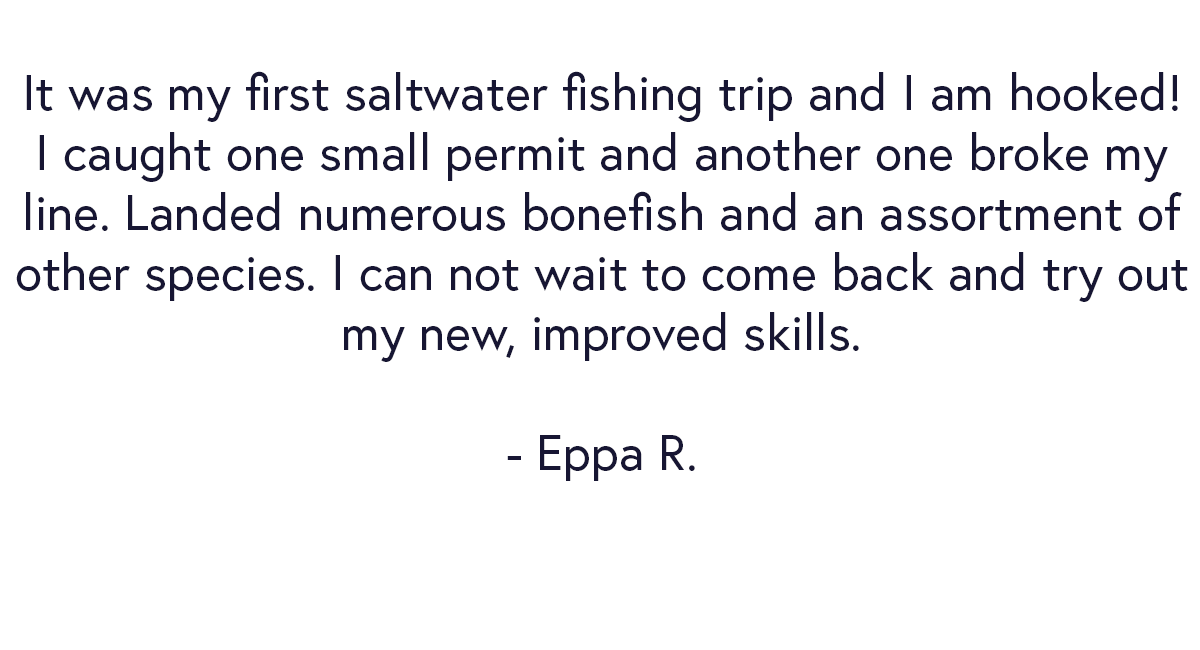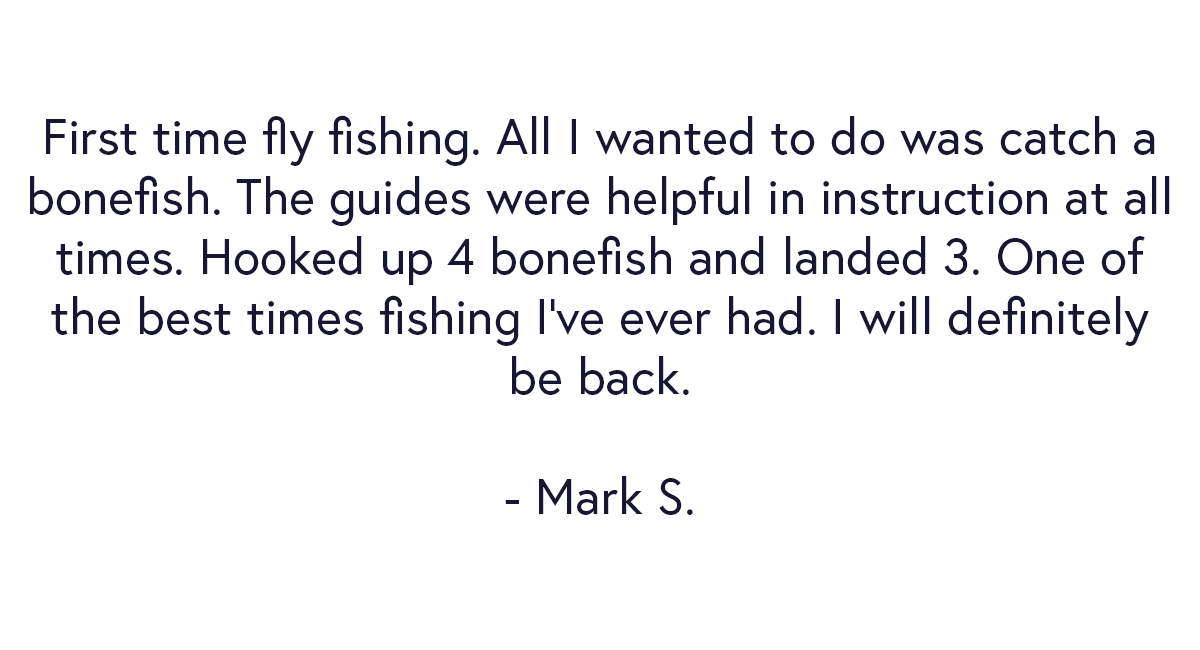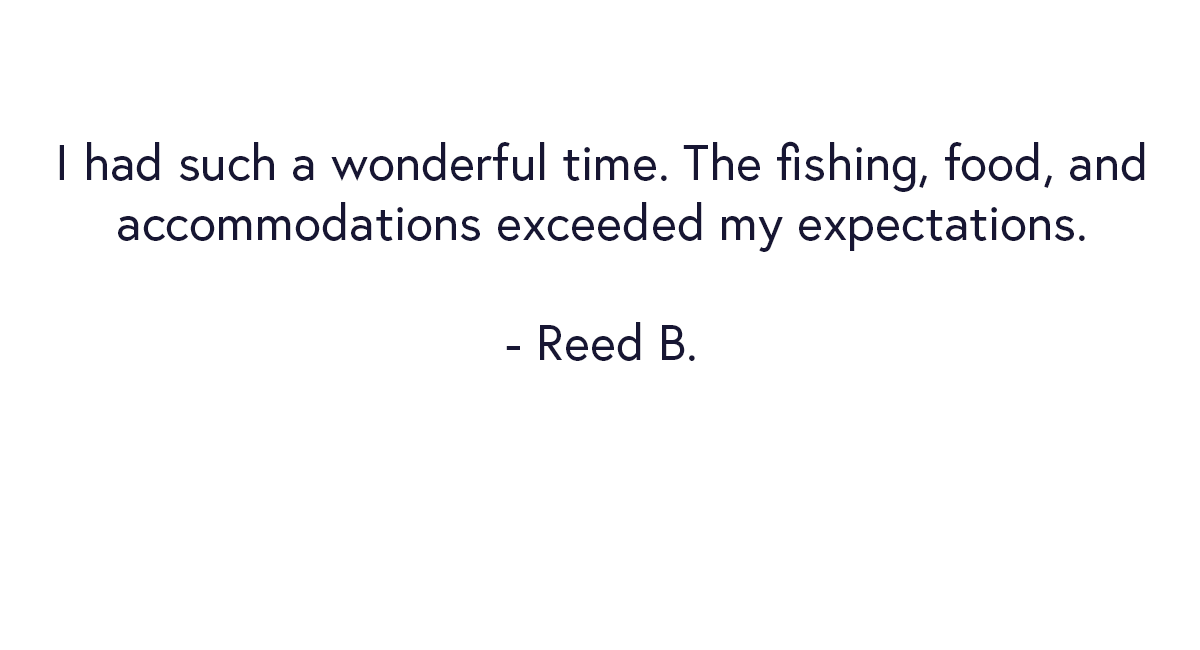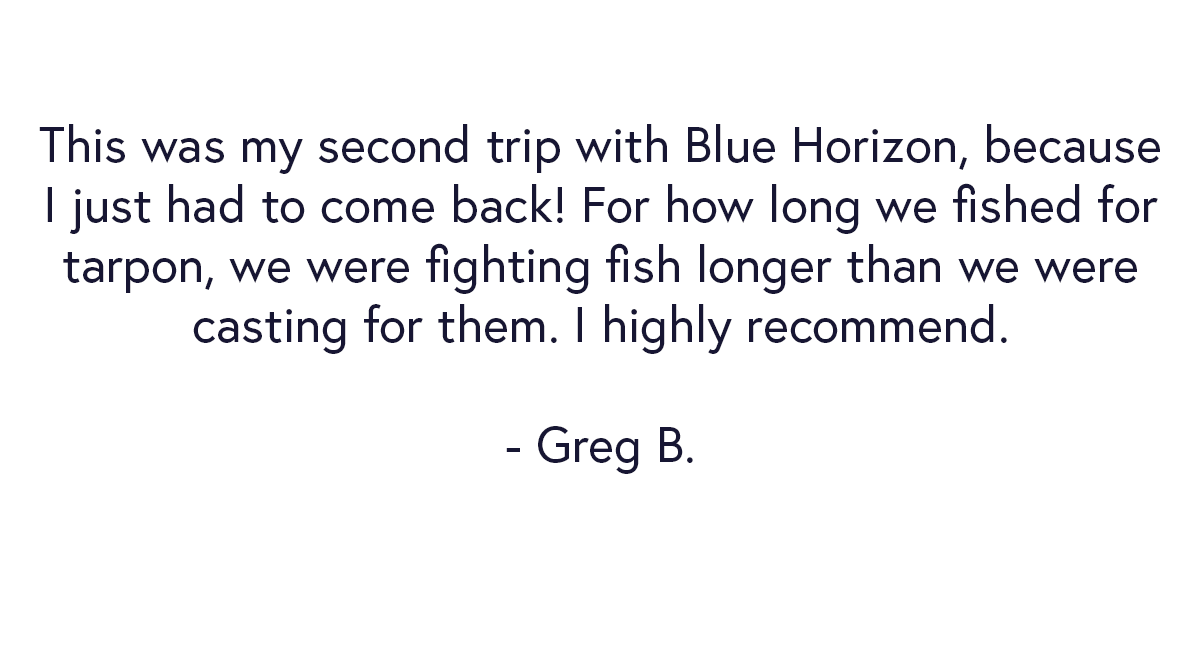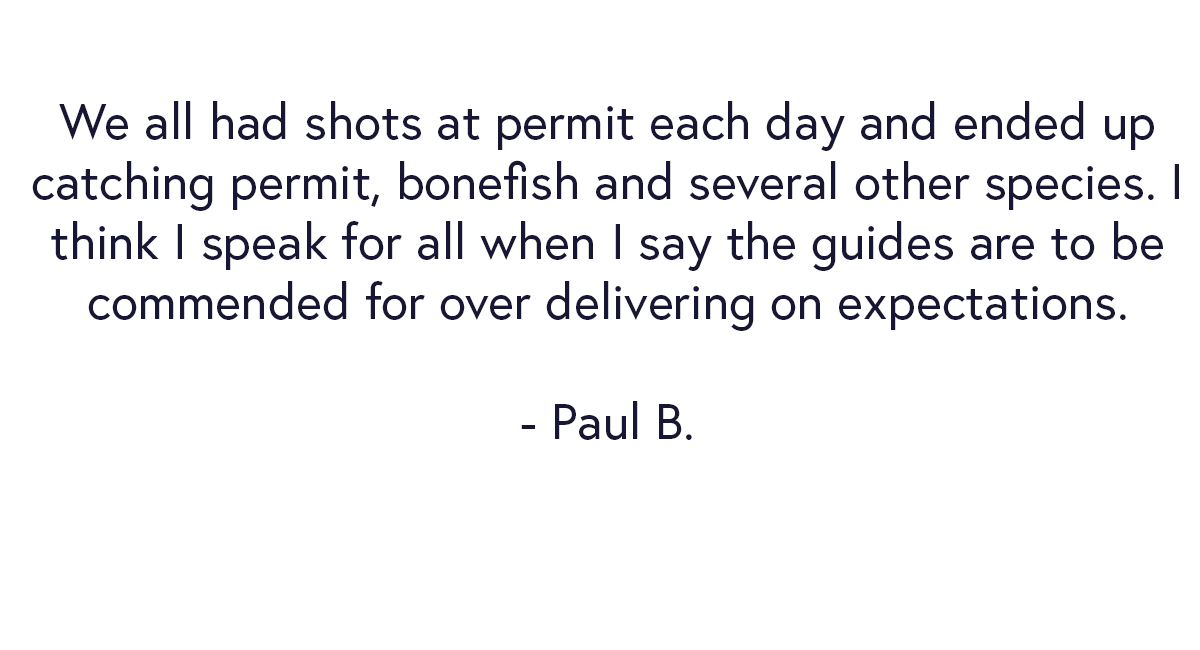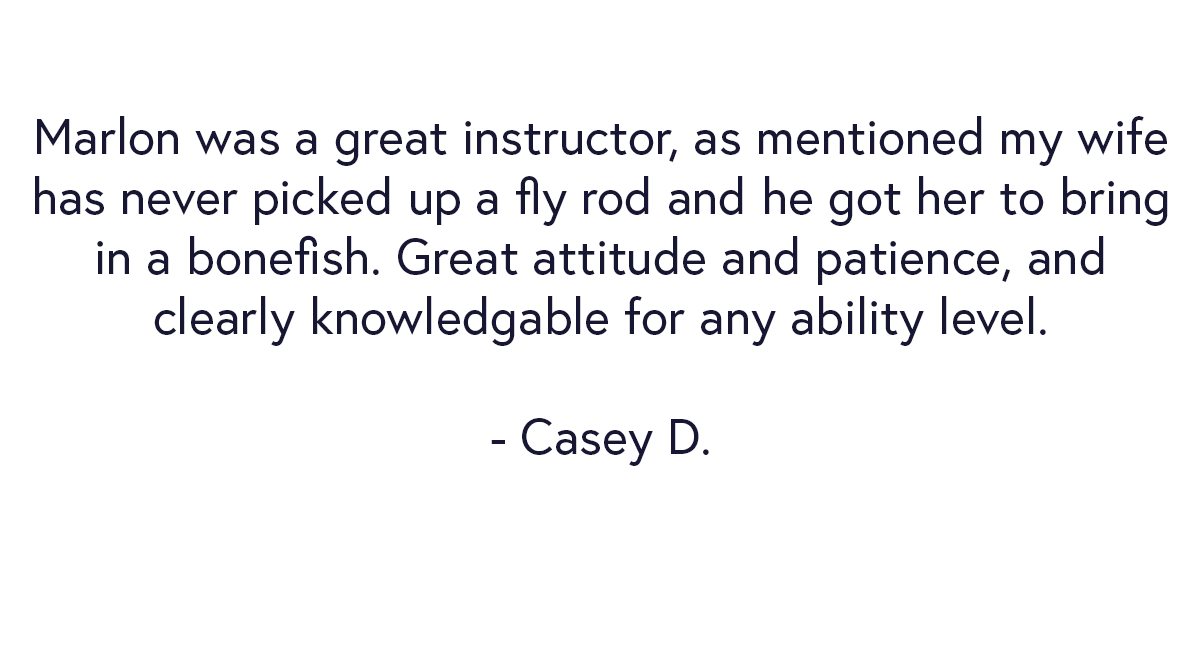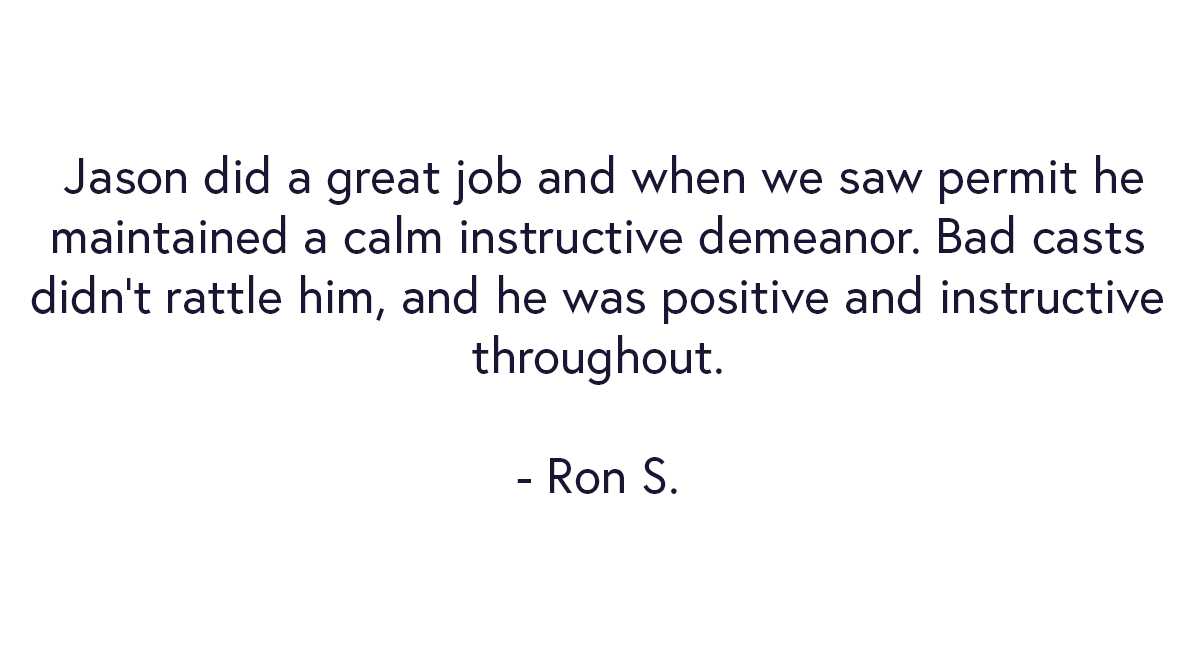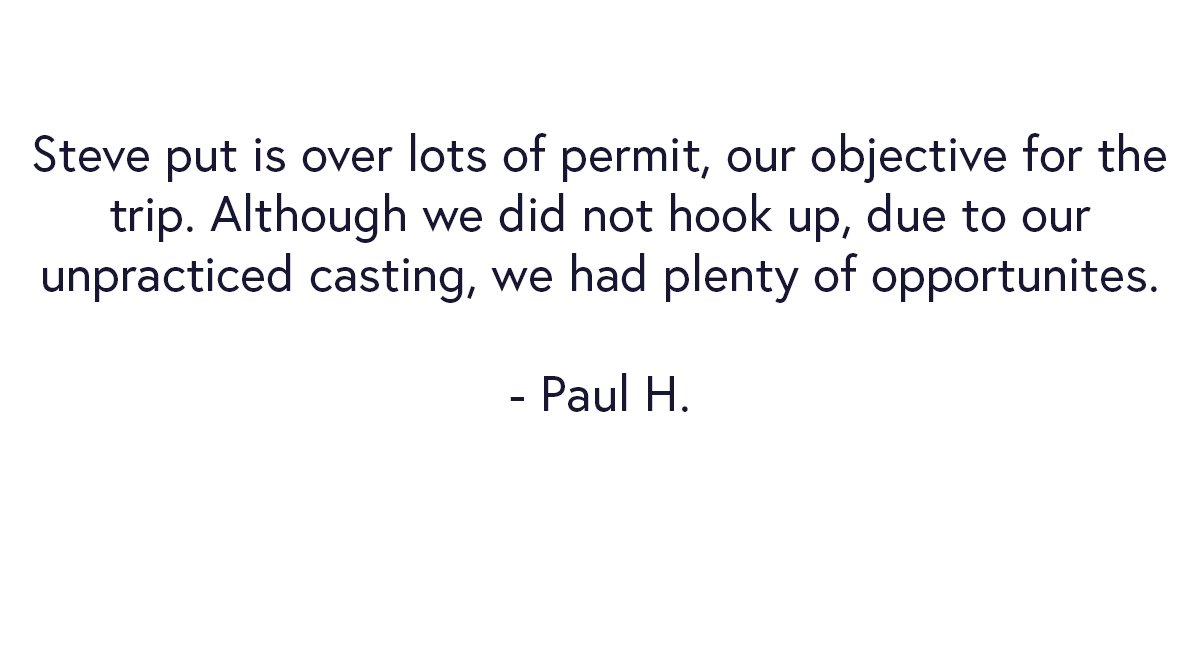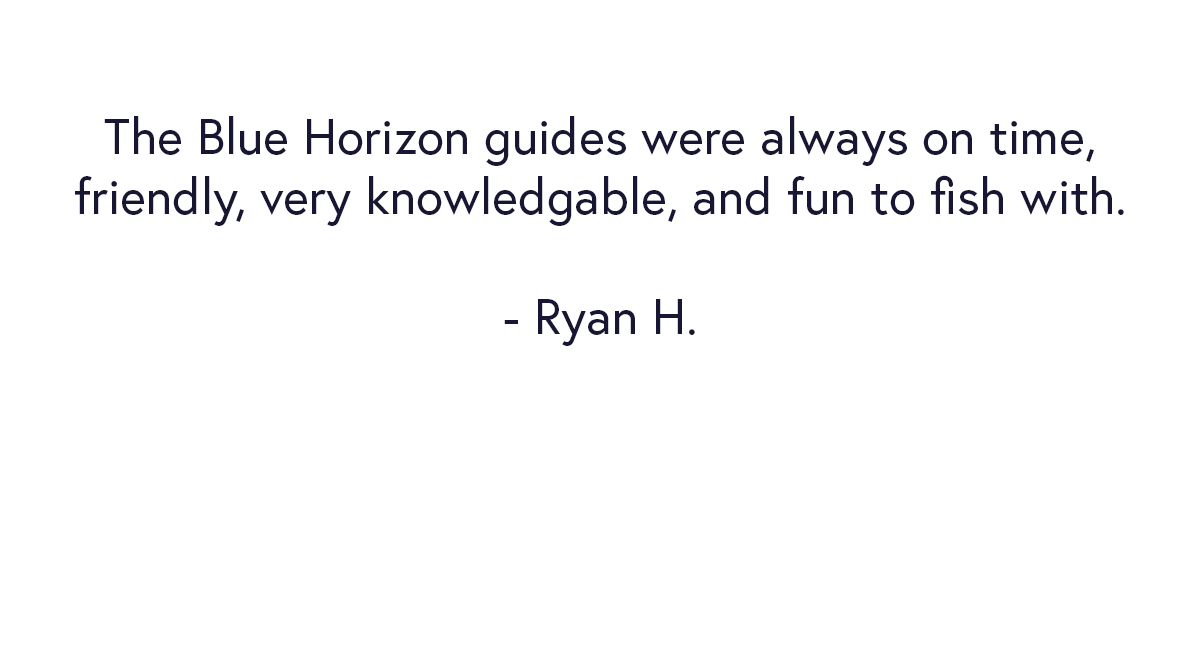PERMIT:
Permit, known as the "Holy Grail" of fly fishing, are by far the most difficult, picky and frustrating fish you'll encounter on the flats. They have superb eyesight and a well-developed sense of smell.
Due to body shape, permit seem to be much more comfortable in deeper water. Although it is fairly common to see a permit with its tail and dorsal fin sticking out of the water, it usually won't remain that way for long. Permit seem to suddenly appear on a flat for a brief feeding spree and then fade back into the safety of the deeper water. They're constantly on the move.
Quick, accurate casting skills (and a lot of luck) are essential. Our experienced guides greatly increase your chance of catching this tricky fish.
Suggested Gear
Rod: 8,9, or 10 wt (Stiff to cast crab patterns in the wind)
Reel: Anodized, corrosion resistant saltwater model. Should be able to hold a full line plus 300 yards of 20 or 30 lb. backing. A high quality smooth disc drag is essential.
Line: Tropical Floating Line
Leaders: 10 ft. 16lb leaders are standard. Extra spools of 16 and 20 lb. saltwater tippet are nice to have.
Flies: A large selection of crab and shrimp patterns in a variety of sizes, colors, and weights. Tan, olive and various shades of brown seem to be the most effective colors for most Belizean waters. Be sure to have a variety of different sink rates.
TARPON:
Tarpon are the largest, strongest and most acrobatic of the grand slam species found in Belize. Even juvenile fish will put angling skills to the test and strain tackle beyond belief. Resident tarpon are typically small- to mid-sized specimens (20-60 pounds), and the large migratory fish can range from 100-150+ pounds. A large majority of these fish remain in Belize throughout the year. Migratory fish begin to show up around mid April and they will remain in Belizean waters into August or September.
River and Lagoon Fishing: Fish will be in deep, murky water where sight fishing is difficult. Rolling fish are somewhat common, but blind casting is the general rule.
Flats and Channel Fishing: Fishing will be done from small skiffs in clear, shallow flats (3-5 feet deep) or in the tidal channels which connect the flats.
Suggested Gear
Rod: 11 or 12 wt
Reel: Anodized, corrosion resistant saltwater model. Should be able to hold a fly line plus 350+ yards of 30 (or 45) lb. backing. A high quality, smooth disc drag is essential.
Line: Tropical floating line. On a spare spool it is recommended to have a heavy sinking line for deep water Tarpon.
Leaders: Pre-tied leaders with a 16 to 20lb class tippet and 80-100 lb. shock tippet. A Tarpon stretcher is great if you are planning on specifically going for Tarpon.
Flies: A basic selection of Tarpon flies in variety of colors and materials. Sizes 2/0 and 3/0 will cover most Tarpon situations in Belize.
BONEFISH:
One third of a Grand Slam, bonefish are one of the most notarized sport fish on the flats. Since the earliest days of sport fishing in Belize, bonefish have been the most abundant flats fish to target. While northern Belize is know for more bonefish, the bonefish in the South Water Caye marine reserve tend to be bigger. Our fishery is not as well know for bonefishing, but it no less productive.
a. Large schools of bonefish can be found on a consistent basis on numerous caye (islands) throughout our fishery. Since bonefish are the most abundant fish, they tend to be the most willing to eat a fly. Bonefish provide great sport for all anglers, and provide hours of fruitful challenge to beginner and intermediate fly anglers.
Suggested Gear
Rods: 8 or 10wt (Stiff enough to cast in windy conditions)
Reel: Anodized, corrosion resistant saltwater mode. Should be able to hold a full line plus 250 yards of 20 lb. backing. A high quality smooth disc drag is important.
Line: Tropical Bonefish taper line (WF8 or WF10)
Leaders: 9’, 20 lb. tapered leader. A spool of 10 and 20 lb. saltwater tippet are nice to have.
Flies: Have a good selection of Bonefish flies in a wide variety of sizes, colors and sink rates. The standard sizes for Bonefish flies in Belize are #4, #6, and #8 with a general rule being the shallower water, the smaller and lighter the fly.
SNOOK:
Known for both their explosive topwater strike and their acrobatic, gill rattling fight, snook are generally found along the inland lagoons and mangrove-lined tidal channels which connect Belize's shallow-water flats. Snook are most often found as singles or in small schools, so remember to thoroughly concentrate on an area where a strike or hookup occurs. Snook tend to feed most aggressively during periods of low light; therefore, the best fishing time will be during dawn and dusk. Top water lures and flies should generally be used during low light periods.
a. Snook often tend to stay close to structure such as mangroves or logs, so an accurate presentation is very important.
Suggested Gear
Rod: 8 or 10 wt (same rod you would use for Bonefish)
Reel: Anodized, corrosion resistant saltwater mode. Should be able to hold a full line plus 250 yards of 20 lb. backing. A high quality smooth disc drag is important.
Line: Tropical floating line (Same as Bonefish setup)
Leaders: A pre-tied leader similar for those used for Tarpon is the ideal set up for Snook. Use a 16 or 20 lb. class tippet with a 40 or 60 lb. shock on the Snook leaders.
Flies: Selection of bright flies in red, orange, yellow, chartreuse, and white, plus saltwater poppers. Many standard Tarpon patterns will work for Snook.
OTHER GAME FISH:
There is a cornucopia of under-utilized species at Belize which will match the skill of the most sophisticated Fly Fisherman.
Barracuda, Jacks and Sharks: Lurking at the top of the food chain, these tough flats predators offer some outstanding action on a fly. They will viciously strike anything that darts away from them in an injured manner. When hooked, they are some of the fastest and most powerful fish to be taken on a fly rod.






![Big news today, Belize’s International Airport (BZE) will reopen on August 15th, 2020. The guides and the rest of the team at @bluehorizonbelize are beyond thrilled to get back on the water. [LINK IN BIO] for more information.
~
~
800.313.1672](https://images.squarespace-cdn.com/content/v1/55267a84e4b0410f3276ac29/1593204378183-F46B4LVPCE0HDU39GHA1/image-asset.jpeg)
![We cannot wait to have you experience the all-new rebuilt Blue Horizon Lodge. [LINK IN BIO] to inquire today.
~
~
800.313.1672 | bluehorizonbelize.com
~
~
#bluehorizonbelize #bluehorizonlodge #permitonfly #permitfly #permitalley #belize #belizefishin](https://images.squarespace-cdn.com/content/v1/55267a84e4b0410f3276ac29/1593204378633-S8TUTT8HHJL4UN9VLNJA/image-asset.jpeg)

